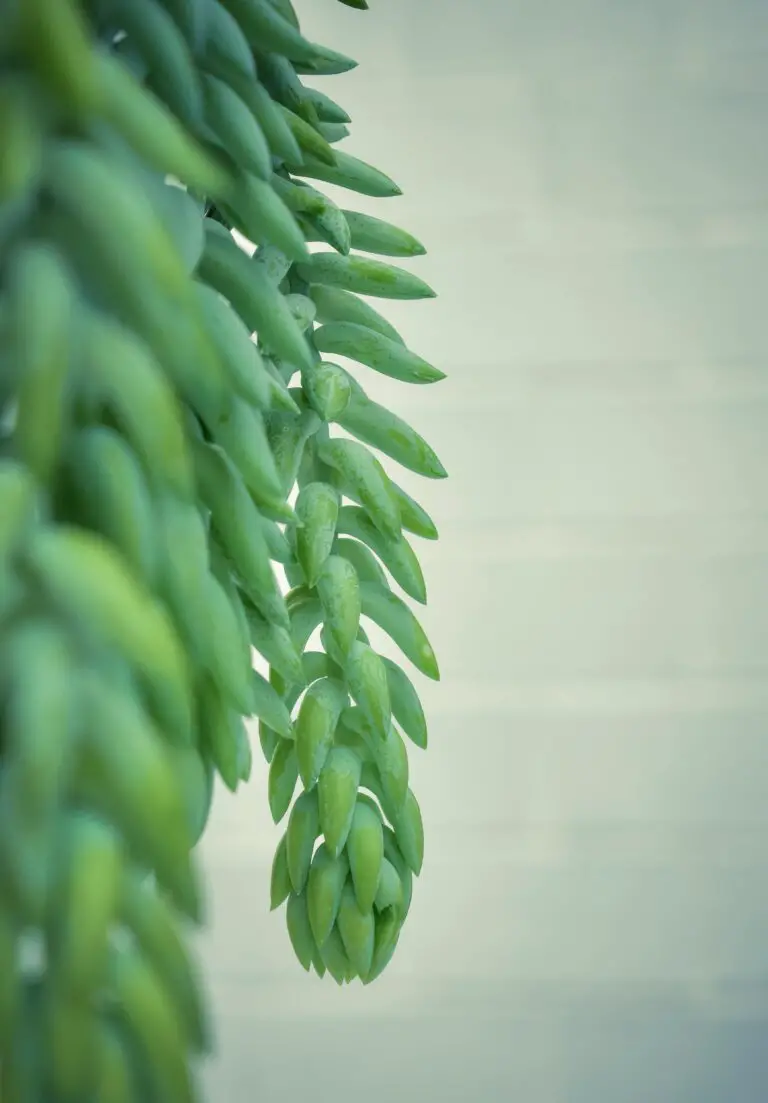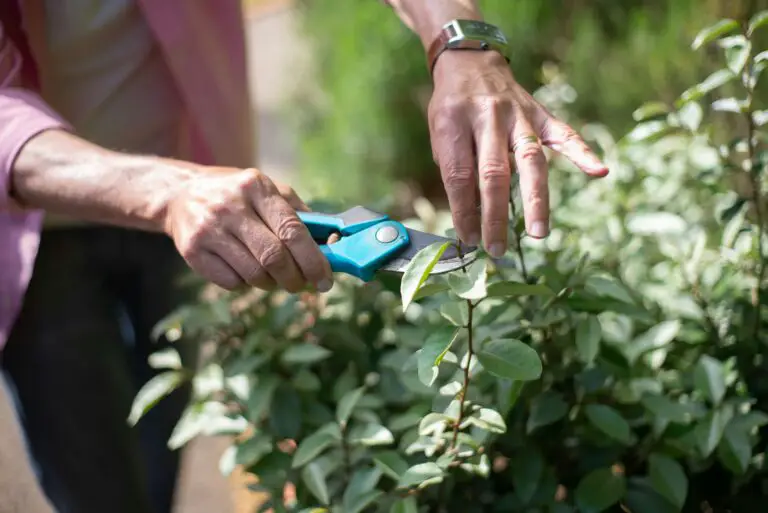Introduction to Sedum Fall Care
As the vibrant tapestry of autumn unfurls, gardeners everywhere take stock of their green companions, preparing them for the cooler embrace of fall. It’s a period marked by transformation, where care in the garden becomes as essential as a warm sweater on a crisp October morning. Especially when it comes to the ever-popular sedum, a succulent that captures the hearts of many with its hardy demeanor and fetching blooms.
Imagine for a moment the common scenario: a lush succulent bed, peppered with the fleshy leaves and star-shaped flowers of the sedum. It stands in defiance of the encroaching fall, soaking in the waning warmth of the late-year sun. But should you just leave it be as the days grow shorter? Or is there wisdom in wielding the shears, shaping your sedum’s future amidst the fall foliage?
Seasonal garden care prompts us to consider each plant’s needs, and the sedum is no exception. Adept at braving the elements, it still appreciates a bit of attention during autumn’s descent. This section delves into the nuances of sedum stewardship as we navigate the shift in seasons.
Why Cutting Down Sedum Can Be Beneficial
Not all gardeners agree on the fall fate of sedum. Some hold fast to the idea that it should be allowed to stand, lending structural beauty to the winter landscape with its frosted seed heads. But others argue for a tidy trim, advocating that cutting back can ward off rot and encourage robust regrowth come spring.
Whichever camp you find yourself in, there’s no denying the importance of understanding your plant’s particular predilections. If you’re keen to learn more about the dos and don’ts of sedum care, I recommend diving into our comprehensive guide on pruning techniques to enhance your garden’s charm.
And let’s not forget the visual aid that modern technology affords us. Below is an insightful video about sedum care in the fall, providing a visual feast of tips and tricks to keep your succulents smiling through the season:
In conclusion, whether you choose to snip or let your sedum stand tall, remember that your fall care decisions carry the weight of winter and the promise of spring within them. A well-tended succulent in autumn can yield a verdant victory when the world awakens anew. So as you contemplate the care of your charming sedums, consider the seasonal shifts and how best to help these resilient beauties thrive. After all, isn’t that what gardening’s all about?
Understanding Sedum’s Growth Cycle
Imagine sedum as the theater actors of the garden stage, with each season being an act in their annual performance. As gardeners, it’s vital to understand the rhythm of these living shows to ensure we’re providing the best care at the right times. Let’s dive in and uncover the secrets of sedum’s captivating lifecycle.
Early spring whispers the cue for sedum to start pushing up new growth, shyly at first, as if testing the air. Sedum plant care guides often emphasize the importance of this period, as it sets the stage for the entire growing season.

As the warmth of summer rolls in, sedum takes center stage with vibrant blooms that attract pollinators and gardeners alike. These are the blissful days of growth and exuberance, with each plant vigorously expanding its presence and the audience of bees and butterflies growing daily.
Then comes the fall—the grand finale. Sedum’s foliage transforms, showcasing an array of fiery colors that signal the end of the growing season. But is this the moment for the final bow and the descent of pruners? Not quite. This guide helps gardeners understand that timing is everything when it comes to pruning.
As the curtains close with the first frost, and winter settles in, sedum plants retreat backstage. This dormancy isn’t idle time, however. It’s an intermission for the plants to gather strength, resting before the next cycle begins.
Understanding the ebbs and flows of sedum’s growth cycle is like being privy to the script of a masterfully directed play. Each season brings its scenes and gardeners have their role to play in ensuring the show goes on seamlessly. So, as the leaves rustle a gentle reminder: timing is indeed everything when caring for these perennial stars.
To Cut or Not to Cut: The Fall Debate
As gardeners tuck their plots in for the winter, a lingering question sets the stage for debate: should sedum be cut down in the fall? It’s like deciding between a snappy new haircut or letting those locks grow wild and free—it’s a personal choice, but with pros and cons to weigh. Let’s dive into the heart of this gardening conundrum and see what path our green thumbs should take.
Picture this: a sedum plant, its fleshy leaves ablaze with a rustic autumn glow, standing proudly in a frost-kissed garden. It’s a real-life snapshot that captures the charm of these hardy perennials. But once those winter whispers start swirling, should we be reaching for the shears? Here’s where the expert opinions split. Some argue that cutting sedum back prevents a slug party and keeps things tidy. Others, however, insist on leaving the stalks standing, offering a buffet for birds and a winter wonderland aesthetic.

Let’s consider our winged friends for a moment—birds like the sparrow and cheeky chickadee. A sedum standing tall is like a diner with the sign “Open All Winter.” The dried-out flower heads, brimming with seeds, are a feast when pickings are slim. And let’s not forget the visual poetry of hoarfrost adorning the sedum’s stoic stems. It’s a sight that can warm the heart, even as your breath turns to mist.
But what about the cleanup crusaders, those orderly souls who can’t stand the thought of untidy beds? To them, a trimmed sedum is a crisp farewell to the growing season—a neat and tidy bow on the package of past blooms. Plus, they say, getting a head start on spring cleaning is never a bad idea.
The truth is, whether you snip or not, sedum will roll with the punches like a true survivor. These resilient succulents aren’t just about looks; they’re about flexibility. Check out our guide on Sedum Planting Success for more insights into helping your sedum thrive, whatever the season’s style.
Ultimately, the decision to cut or not to cut sedum in fall boils down to a blend of personal preference and practical considerations—like a garden-sized Choose Your Own Adventure. So, whether you’re aiming for neatness or nurturing nature’s larder, both roads lead to a sedum that’s ready to spring back into action when the frost retreats and the sun climbs higher. And isn’t that the real joy of gardening—finding your own way to make nature’s bounty sing?
How Pruning Affects Sedum’s Winter Survival
Have you ever wondered if your sedum plants need a little haircut before winter hits? It’s a common question among garden enthusiasts: Should sedum be cut down in the fall? Well, let’s dive into the “hairy” details of how pruning can impact these hardy beauties during the chillier months.
Imagine tucking in your sedum under a blanket of snow, providing it with a snug layer of insulation. By not cutting back your sedum, you’re essentially giving it a natural protective coat. The dried stems and foliage create a barrier against the cold, safeguarding the crown of the plant from freezing temperatures. It’s like having an extra sweater on a frosty day – it can make all the difference!
Cutting back sedum in the fall is often debated due to the potential benefits and downsides. If you’re a neat freak in the garden, you might be itching to snip away those brown stems. But hold those pruners for just a moment! The dead foliage isn’t just there to annoy you; it serves as vital winter armor for the plant. Those seemingly lifeless parts catch and hold snow which, ironically, insulates the plant from extreme cold – Mother Nature’s own version of bubble wrap.
On the flip side, giving your sedum a trim can stimulate regeneration when the growing season rolls back around. It’s like hitting the refresh button on your computer, only in this case, you’re setting the stage for new growth. Picture this: once the snow melts and the sun begins to warm the soil, those cut-back sedums are ready to spring into action, without old growth holding them back.
Yet, there’s a catch. Pruning too early or too late can leave your sedums vulnerable. Trim too soon, and the newly exposed crowns could be damaged by a surprise freeze. Wait too long, and you might as well be shouting ‘open season’ for pests looking for winter homes in the dense foliage. The timing is as crucial as the action itself – think of it as the garden’s version of a well-timed chess move.
Real-Life Insights on Pruning for Winter
Let’s bring in some real-world examples. Take Brenda, a seasoned gardener from the frosty North. She swears by leaving her sedums untouched in the fall, claiming they fare better against her region’s harsh winters. Then there’s Lucas, from the milder West Coast, who trims his sedums back in late fall and covers the crowns with a protective layer of mulch, ensuring a sprightly comeback in the spring.
What’s clear is that there’s no one-size-fits-all approach. Your local climate and the specific type of sedum you’re growing will influence your choice. Some varieties might relish the winter haircut, while others prefer to keep their locks until spring.
To help you visualize the difference pruning can make, let’s take a look at this helpful video. It gives a glimpse into how you can care for your sedum post-summer and what you might expect when spring comes knocking:
There you have it, fellow green-thumbs! Whether you decide to prune or not, remember that your sedum’s winter survival might just depend on that decision. Keep those pruners handy… or not. The choice is yours, but now you’re equipped with the knowledge to make it a well-informed one.
Step-by-Step Guide to Cutting Sedum in the Fall
As the crisp air of autumn sets in, it’s time to give your sedum plants a little pre-winter pampering. But before you go snip-happy, let’s walk you through the motions. Imagine it’s like giving your plant a new hairstyle, one that not only looks good but also promotes a healthy and vigorous comeback next spring.
Gather Your Tools: First things first, let’s rustle up the right tools for the job. You’re going to need a clean, sharp pair of pruning shears or scissors. Believe me, using dull tools is about as effective as slicing bread with a spoon. Not only does it make your job harder, but it can also leave ragged cuts that are more susceptible to disease.

Assess Your Sedum: Next, take a good look at your sedum. You’re not just cutting for the sake of cutting – you need to size up the situation. Identify any dead or damaged stems that didn’t make it through the summer’s heat or any pests’ little snack time. Those are the first to go.
Time to Trim: Now for the fun part. Start trimming back the sedum to about 1-2 inches above the soil level. Think of it as giving your plant a close crop. By doing this, you’re not only tidying up your garden but also encouraging the plant to store all its energy in the roots, ready to burst into life when the warmer days roll around.
Do you remember Bob from down the street, the one with the wildly sculpted bushes? Well, you’re going to want to do the opposite of what he does. This isn’t the time for artistic flair; keep it simple and straightforward. A nice, even cut is what you’re aiming for.
Dispose of Debris: Don’t just leave those pruned bits lying around like a bad haircut on a salon floor. Remove the debris to prevent any fungal friends from moving in. It’s like clearing the stage after a show – it keeps the garden tidy and disease at bay.
Aftercare: Finally, show your sedum some love after the cut. Water it if the soil is dry, but remember, sedum is as tough as that old leather jacket you can’t seem to part with, so it doesn’t need much pampering. Just let it rest and ready itself for its springtime revival.
With these steps in mind, your sedum will be pruned to perfection, ready to endure the winter and spring back to life more fabulous than ever. So, grab those shears, and let’s keep your garden looking sharp!
Alternatives to Fall Cutting: Other Sedum Care Tips
When autumn’s crispness blankets the garden, the question arises, “Should sedum be cut down in the fall?” While some enthusiasts swear by a good fall trim, others suggest a gentler approach to sedum care that may better suit your succulent sidekicks. Let’s dig into some alternatives you can root for!
Mulching Marvels: A Blanket of Benefits
Picture a chilly winter’s day, where you’re snug as a bug in a rug; now imagine giving your sedums the same cozy treatment with a layer of mulch. Not only does mulching moderate soil temperature and retain moisture, but it also prevents weed growth. Opt for organic materials like straw, bark, or shredded leaves, which can enrich the soil as they decompose. Recall the backyard scene where your neighbor’s sedum thrived under a pine-straw quilt, while uncovered specimens struggled? Emulate that success and give your plants a mulch hug.
Selective Trimming: Clipping with Care
Instead of shearing sedums down to stumps, consider the ‘less is more’ mantra. Practice selective trimming, snipping off dead or overgrown sections with precision. It’s like giving your sedum a haircut that enhances its natural shape rather than a complete buzz cut. Just last week, my friend marveled at how removing a few straggly stems revitalized her ‘Autumn Joy’ sedum, encouraging fresh growth sans a full-on fall cutback.
The interactive care tips in this video can help illustrate these methods in action. As you watch, visualize how these gentle touches can maintain the vitality and aesthetics of your sedum without the wholesale snipping that fall cutting entails.
${‘‘}
Common Mistakes to Avoid with Fall Sedum Pruning
Imagine this: It’s a crisp, golden fall day, and you’re out in the garden with secateurs in hand, ready to give your sedum its annual trim. But wait—before you make that first cut, let’s talk about some of the blunders you definitely want to sidestep. Pruning your sedum incorrectly in autumn could lead to a less robust plant come spring. So, let’s dig into the do’s and don’ts to keep your sedum looking splendid.
One common slip-up is cutting your sedum back too early. While some gardeners are eager to neaten up their garden beds as soon as the leaves start turning, jumping the gun on sedum can be counterproductive. These hardy perennials often provide winter interest with their sturdy stems and seed heads, and they also offer a little snack for our feathered friends. It’s a good idea to wait until the stems are well and truly done before cutting back—think “better late than never.”
Going in for the chop without a clear plan is another mistake that can haunt you through the winter. It’s not about random snipping; consider the shape and health of the plant. Visualize how you want it to look next year and prune accordingly. Removing dead or damaged stems is a no-brainer, but you should also think about encouraging a compact, bushy growth by cutting just above a healthy leaf node.
Now, let’s talk equipment. Dull tools can crush and damage the stems, inviting disease and pests over for a nasty feast. Invest in a good pair of sharp secateurs, and keep them clean to give your sedum the precise cut it deserves. And remember, always cut at an angle to prevent water from accumulating on the cut surface, which can lead to rot.
Lastly, the overzealous snipper can do more harm than good. Sedum is resilient, but it doesn’t take kindly to being cut back too aggressively. Aim to maintain a structure that ensures sunlight and air can reach the center of the plant, which will keep it healthy and happy. Too much enthusiasm with the clippers and you might find yourself with a sparse sedum—or worse, a dead one!
Pro Pruning Tip: Timing is Everything
Remember, your sedum’s future lushness hinges on when and how you prune in the fall. Be patient, be precise, and your sedum will reward you with vigorous growth and vibrant blossoms when the warmer weather rolls around. So, go on, enjoy that cup of coffee in the morning chill, and plan your sedum pruning for when the timing’s just right.
Frequently Asked Questions
When autumn paints the landscape with its mosaic of colors, it’s time we garden enthusiasts get our green thumbs itching with queries about fall plant care. One burning question often at the forefront is, “should sedum be cut down in the fall?” Grab your gardening gloves, and let’s dig into the common ponderings of sedum’s autumn agenda!

Do Sedum Plants Need a Fall Trim?
Imagine strolling through your garden, the crunch of fallen leaves underfoot and the crisp autumn air tickling your nose. Your eyes fall upon the sedum’s plump, dew-kissed foliage – but to clip or not to clip? Well, sedum aficionados may choose to snip back those succulent stems or let them stand as winter warriors. Cutting back can tidy up your plot, but leaving them be gifts your garden with a frost-kissed sculpture when winter arrives. Itch to snip if you must, but know that sedum’s stout heartiness could just as easily let nature take its course.
What’s the Best Time to Prune?
Timing is everything. As the days shorten and the pumpkin spice makes its grand return, your sedums beckon for attention – but when? Wait until the leaves get a hint of Jack Frost, but before old man winter fully bulldozes in. That’s your golden hour to prune, typically lurking around late fall. Why then, you ask? Because this allows the sedum to store all that good energy for the spring surprise it plans to unveil.
Any Tips to Keep in Mind?
Whether you’re a gardening guru or a newbie nurturer, remember: be gentle with those clippers. Talking from experience, a snip here, a snip there, and voilà – you’re set until spring’s encore. Also, remind yourself that you’re not just pruning sedum but setting the stage for next year’s performance. Think of it as an intermission where the sedum gathers its props backstage (or underground) for a show-stopping bloom when the curtains rise again.
When counting the final days of autumn, you might wonder about the future look of your sedum. Picture this: instead of a bare stem wasteland, your garden flaunts a masterpiece of ice-glazed spectacles, the sedum’s seed heads wearing winter’s sparkling tiara. If ‘let it grow’ is your mantra, then letting the sedum stay as is throughout the fall could dress your garden in a cloak of winter royalty.
In the great fall trim debate, know that whether you cut or care for sedum in its natural form, you’re curating a garden narrative that’s uniquely yours. Happy fall gardening!



